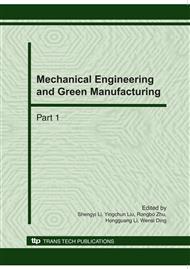p.1258
p.1263
p.1269
p.1274
p.1279
p.1284
p.1289
p.1294
p.1299
Design and Analysis of Slide Valve Used in Water Hydraulic Servo Valve Based on Flow Field Simulation
Abstract:
Because of the difference between oil and water in physical and chemical properties, research on the design method of water hydraulic slide valve is important to design the water hydraulic servo valve. Based on the flow fluid simulation of incompressible flow, according to the design parameters of water hydraulic slide valve, CFD software Fluent is used to simulate and analyze the flow characteristics of water hydraulic slide valve. The simulation model of Slide valve with rectangular openings has been built, and different combinations of boundary conditions are specified to make comparisons so as to ensure the correctness of the simulation. The factors which impact the static characteristics of slide valve like the spool opening, flow coefficient, incidence angle have been discussed. The results indicate that the flow designed of the slide valve is approximately proportional to the spool opening by rational selection of structure parameters. The structure parameters of the slide valve that satisfy the design requirements are derived.
Info:
Periodical:
Pages:
1279-1283
Citation:
Online since:
October 2010
Authors:
Price:
Сopyright:
© 2010 Trans Tech Publications Ltd. All Rights Reserved
Share:
Citation:


